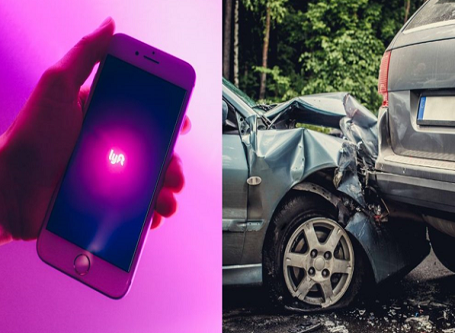What Types of Evidence are Most Effective in a Rideshare Accident Case?
 Building a strong case after a rideshare accident depends on solid evidence. You need evidence clearly proving what happened, who was responsible, and how it affected you. When you file a claim or go to court, this information will be crucial. Your chances of receiving fair compensation are higher with the types of evidence you possess.
Building a strong case after a rideshare accident depends on solid evidence. You need evidence clearly proving what happened, who was responsible, and how it affected you. When you file a claim or go to court, this information will be crucial. Your chances of receiving fair compensation are higher with the types of evidence you possess.
Albuquerque is a busy city with rideshare services available day and night. Its rising population and traffic congestion make ridesharing vehicle accidents common. In these situations, hiring a rideshare accident lawyer in Albuquerque will enable you to quickly gather the right evidence. Let’s look at the types of evidence most effective for rideshare accident cases.
Police Reports
Often the first official documentation of the accident is a police report.
* They include the observations made by the officer and statements from involved parties.
* These reports can highlight traffic violations or possible responsible parties.
* Getting a copy immediately supports your side of the story.
Pictures and Videos
Pictures show what words cannot.
* Photograph the damage, your injuries, and the road.
* Do not overlook street signs, skid marks, or traffic lights.
* If someone nearby captured the crash, that footage could also be helpful.
Pictures can also demonstrate whether the rideshare car had damage or corporate decals matching your account.
Eyewitness Statements
Those who saw when the crash happened can verify its occurrence.
* They may have seen the rideshare driver disobey traffic signals or even speed.
* In court, the statement of a neutral observer is valuable.
* At the scene, be sure you collect names and phone information.
Your case will be stronger the more people support your version of events.
Dashcam Footage
Dashcam videos are very solid pieces of evidence.
* Many times, rideshare drivers have cameras running during rides.
* These can show the moment of impact and the preceding events.
* They might also capture the behavior of the driver before the accident.
Ask your attorney to request this video as soon as possible before it is deleted.
Medical Records
Your injuries have to be clearly documented.
* See the doctor even if initially you feel okay.
* Keep a record of all treatments, tests, and prescriptions.
* Ask your doctor to record how the injuries affect your everyday life.
This evidence shows you were injured and connects your condition to the collision.
Rideshare App Data
The app records more than you might think.
* It notes your ride’s starting time and the route you followed.
* You can show the driver was on duty during the collision.
* Save screenshots, including your ride information and any chats with the company.
This data proves that the insurance of the rideshare provider ought to be applicable.
Insurance Information
Ask the rideshare driver for full details.
* Request their company coverage as well as personal insurance.
* This lets you know where to file your claim.
* Jot down the driver’s name, license number, and phone number.
If the driver logged into the app, the company’s policy might cover you.
Company Records
Uber or Lyft may have more data about the driver.
* They log accidents, complaints, and trip history.
* This information can reveal whether the driver had a history of unsafe behavior.
* Your lawyer might have to ask to have these records made available.
These records can tip the case to your advantage, particularly if this data reveals the driver wasn’t fit for the job.